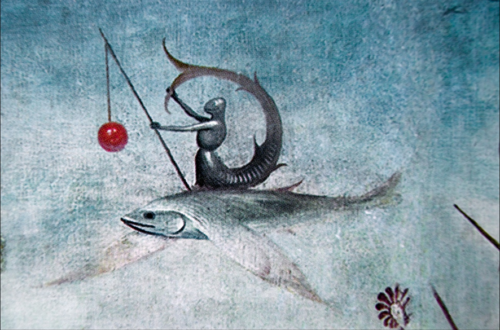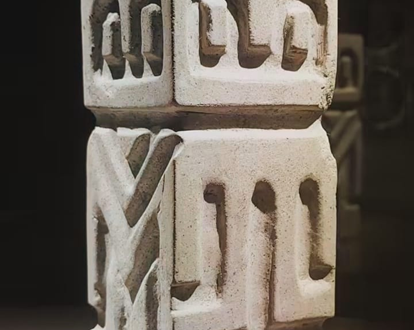Relational and Social Constructionist Consortium of Ecuador (IRYSE)
Diego Tapia Figueroa, Ph.D. and Maritza Crespo Balderrama, M.A.
«Language acquires its capacity for meaning from relationships, from the way it is used when people coordinate with each other and with the world around them… Social constructionist dialogue refers to the processes by which humans generate meaning together… I am the intersection of all my relationships”
Kenneth Gergen
“We must pay attention to the polyphonies. During the conversation, we can play music that suddenly resonates with another melody that is not ours. They can be rescued for the process whenever they are relevant: what was useful, what could be, what we can transform together.”
Dora Fried Schnitman
“The teacher said, “Write what you see.”
But what I see doesn’t excite me.
The teacher responded: “Change what you see.”
Louise Glück
How can we bring our resources to this dialogue, which has a transformative purpose?
Being a relational, social-constructionist, generative therapist means a way to participate vividly in the conversation. Someone capable of noticing what is different, the possibilities in the dialogue.
Relational means that it is a process to produce transformations in the relational contexts in which we participate. Be relationally responsible while being in sync with the relationship itself. Curiosity and respect hold the tension of difference; they create a context for dialogue, and facilitate participants to connect and engage in new ways of conversing together.
The importance of relationships lies in the culture of good treatment and language. Good treatment means, first of all, dialogue. Everything that does not put dialogue first, implies bad treatment and means exclusion. The premise that dialogue is generative (that transformation occurs in and through dialogue) is the foundation of this practice and actions from a relational ethic. It is the dialogue, the authentic connection, the assertive reflection, and the bond of trust and security that make being with the other a transformative human process, which generates responsibility, joy, and freedom; which mobilizes strengths and resources.
Words form our meanings, and these influence the way we live. The moment we utter a word, the moment we express ourselves: we are, we become; at that moment we tell others -and ourselves- about our complex human condition and our dignity; we show what our being is like, who we are, what we are, and what we can become.
We understand that the meaning of experiences depends on the relational context; it is a joint construction of meanings. It is a permanent, incessant becoming, in the continuous metamorphosis of being and of being with the other, opening possibilities; generating connections with new meanings, the product of shared dialogue, for which we are responsible and with which we take responsibility; taking care of the dialogue process, the relationship, and the participants in these conversations; giving responsible responses.
Dialogue is the first option in the construction of relational ethics: language is what allows us to be and builds us; it is in living dialogue that life speaks. By relating dialogically, we construct ourselves socially. Only dialogue opens the possibilities of encountering, respectfully, diversity and for the other to be a genuine interlocutor because it is in this action with others -dialogue- that the being exists. Dialogue has a pragmatic dimension; dialogue is action in the world.
Dialogue means that two people are interconnected. It is looking at the relational field that is organized when one is linked to the other; when we connect with others, new aspects for compression are generated, and links are produced to develop new forms of collaboration. It is in this space and relational context -with a reflective level- where the words of one of the interlocutors make sense due to the relationship-connection they establish with the words of the other interlocutor. Words that, by creating new connections, build intelligent relationships for life.
Put the focus on the relationship, on which «with» is relationally interwoven
As Sheila McNamee explains, people are invited into new ways of understanding differences –that’s what dialogue is all about. What is significant is to contextualize the actions to make possible the understanding of people’s needs and the co-construction of alternatives to solve them. Deciding to opt for this social-constructionist/relational philosophy as the place from which we can choose to relate to others; to go to a meeting (an open and free dialogue with the other).
To practice social/relational constructionism we focus on the RELATIONSHIP that exists between us, not on things or anyone specifically but on what together, as a result of the relationship (of dialogue), we can achieve.
We constantly look for possibilities that we build, knowing the limitations that arise, but seeking to overcome them through dialogue, deep listening, mutual acceptance, and a positive vision of interrelationships.
From the reflective pragmatics of social/relational constructionism, we focus on the word «with», which is relationally interwoven. We co-construct and expand possibilities with dialogue to co-create new futures.
The therapeutic process is based on the relationship, it fully relies on dialogue to build complexity and articulates possibilities in these exchanges, which seek the joint construction of meanings; opening a space of dignity for the words and dilemmas of the consultants. We open ourselves to the being of others, from this position of «not knowing», which questions in us what others have said.
Opening a place of understanding, respect, curiosity, safety, trust, and acceptance for them to tell their story, in their own voice. And also making space for silence -and listening deeply- is also listening to the silences, without anxiety, without colonizing with our words from supposed “experts”, to stop wanting to impose our “truth” in the conversational space, without wanting to “teach to live” to others. Letting, with confidence, the relational space (even more so if it is a therapeutic space) be inhabited by the word, by the stories of the consultants.
We talk through questions that open up the possibilities that openness and understanding of differences give us. The question -transformative dialogue- opens freedom, with its responsible practice in relationships. With questions (respectful, new, different, open, curious, creative, reflective, meaningful) we interrogate -questioning- what is established, seeking justice, equity, and dignity in relationships.
In every human interrelation, whether we say it or not, we seek love, affection, connection, interweaving, bonds, acceptance, respect, belonging, freedom, recognition, understanding, joy, company, legitimation, trust, security, intelligence, and relational ethics.
Understanding therapy as a complex and subtle exchange of interpersonal meanings helps to create spaces to join clients in the construction of a complete and deep horizon fed by the stories -often confusing- in which they are emotionally involved and act.
The therapy processes involve working with a diverse group of people; doing it from this social-constructionist/relational perspective, is an invitation to shared freedom, in which the “truth” dissolves, and what is important is the different dialogue about what we can build together; with curiosity and respect. What is generative lies in the joint co-construction of solutions.
Decide to choose to maintain the posture of a curious learner and a dialogic conversation with oneself as a first step towards dialogue with others, and discover the beauty that is embodied in the development of an attitude and an aesthetic outlook on life. Within a dialogic ethic and aesthetics -where different relationships are generated- it is possible to promote social, artistic, and political transformations.
Therapy is considered, then, as a space open to social, cultural, political, ethical, and aesthetic life; a space for reflection capable of releasing resources and strengths, which emancipate and therefore generate responsibilities for the creation of contexts that promote social justice.
It is deciding that therapy serves to be in the world from an affirmative, non-conformist, or uncritical position, rather, positively committed to those who create the possibilities of a socially new life, differentiated from the culture of death; of the prevailing oppression, injustice, and violence.
Suggested bibliography:
Andersen, T. (2013). A sentence in five lines. On the production of meanings from the perspective of relationship, prejudice, and bewitchment. In Deissler, K. & McNamee, S. (Ed) Filo and Sofía in dialogue. (pp. 76-83) Ohio, USA: Ed. Taos Institute Publication.
Anderson, H. (1999). Conversation, language, and possibilities. A postmodern approach to therapy. Buenos Aires, Argentina Amorrortu Editorial.
Fried Schnitman, D. (Ed.) (2017), Dialogues for transformation: development of projects and generative research aimed at building futures in Ibero-America – Volume 3. Ohio, USA: Ed. A Taos Institute Publication. WorldShare Books.
Gergen, K. (2016). The relational Being. Beyond Self and Community. Bilbao, Spain: Editorial Desclée de Brouwer, SA
Gergen, K. (2014). From Mirroring to World-Making: Research as Future Forming, Retrieved from: https://taoslearning.ning.com/groups2/global-relational-research-network/virtual-symposium-2018.
Mc Namee, S (2016). Resources for Facilitating Differing Worldviews, Taos Institute December 2016. Retrieved from: http://www.taosinstitute.net/Websites/taos/files/Content/5868649/Resources_for_Facilitating_Multiple_Worldviews_(McNamee).pdf
IRYSE (2018) Blog of the Relational and Socioconstructionist Institute of Ecuador (IRYSE): https://iryse.org/

English translation by Bruno Tapia Naranjo.



